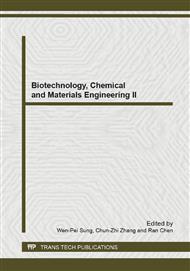p.444
p.448
p.452
p.456
p.460
p.464
p.469
p.473
p.479
Prediction of Detonation Pressure of Aluminized Explosive by Artificial Neural Network
Abstract:
In this study, a three-layer artificial neural network(ANN) model was constructed to predict the detonation pressure of aluminized explosive. Elemental composition and loading density were employed as input descriptors and detonation pressure was used as output. The dataset of 41 aluminized explosives was randomly divided into a training set (30) and a prediction set (11). After optimized by adjusting various parameters, the optimal condition of the neural network was obtained. Simulated with the final optimum neural network [6–9–1], calculated detonation pressures show good agreement with experimental results. It is shown here that ANN is able to produce accurate predictions of the detonation pressure of aluminized explosive.
Info:
Periodical:
Pages:
460-463
Citation:
Online since:
January 2013
Authors:
Price:
Сopyright:
© 2013 Trans Tech Publications Ltd. All Rights Reserved
Share:
Citation:


